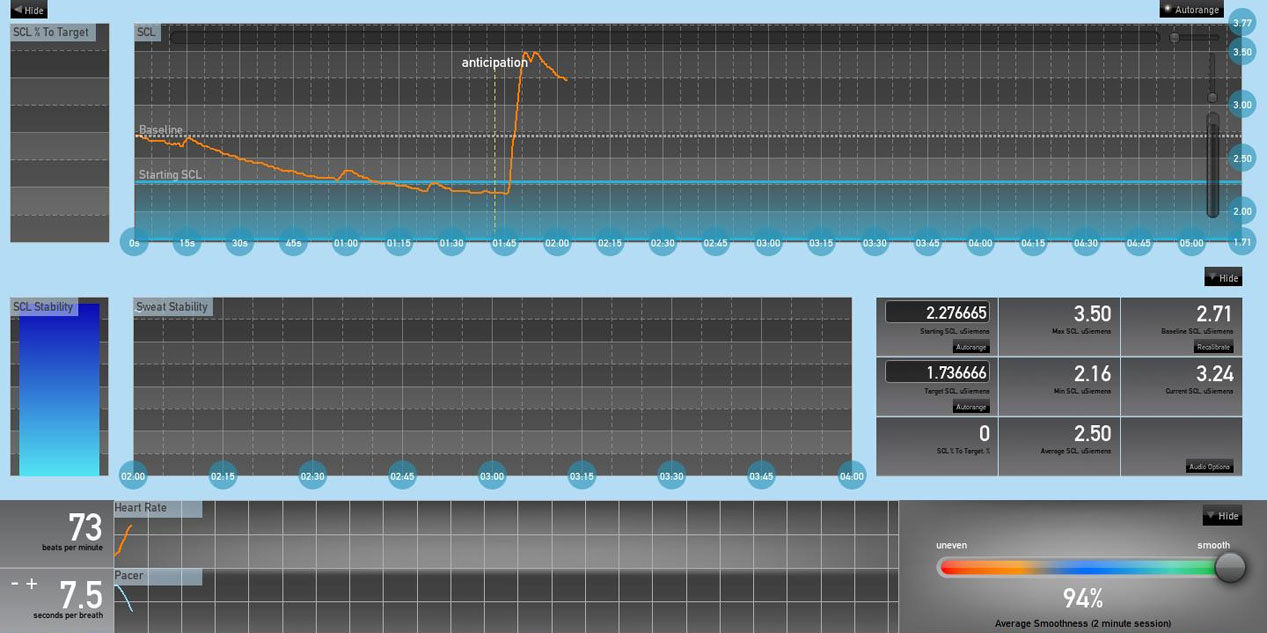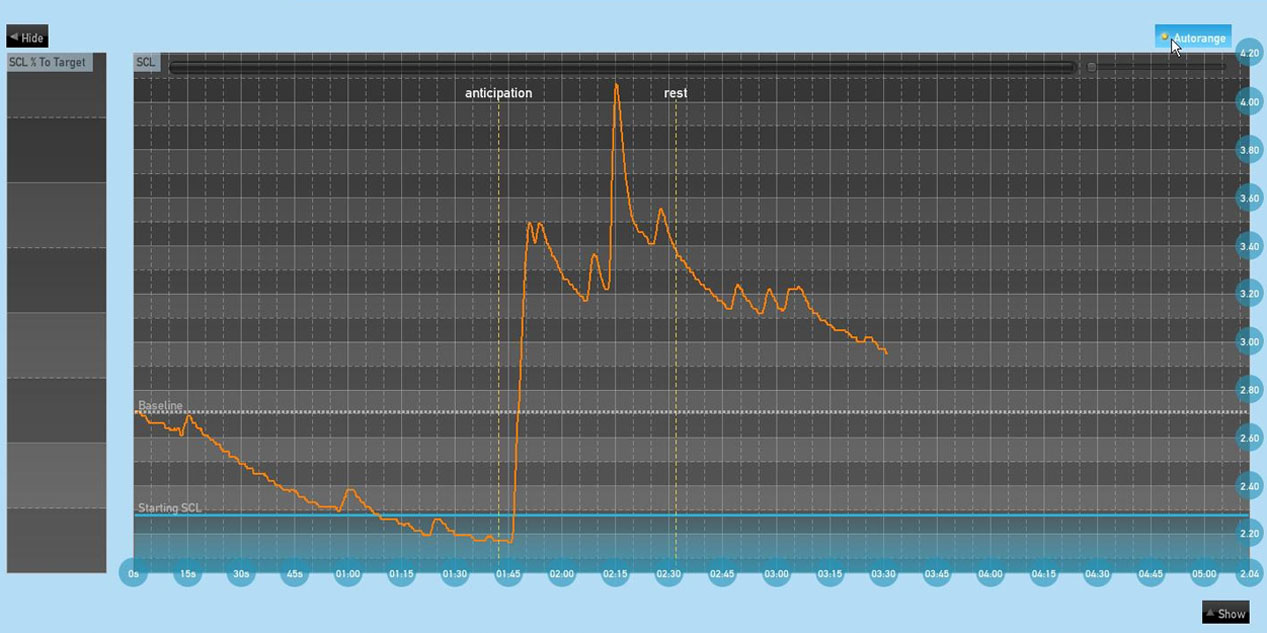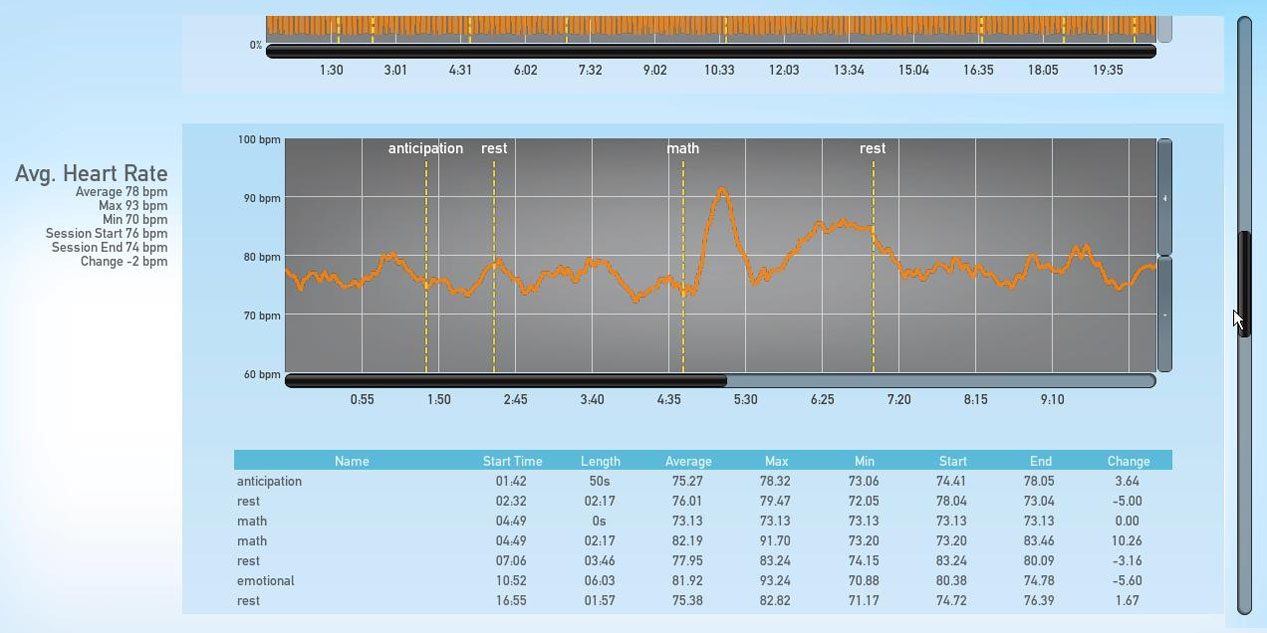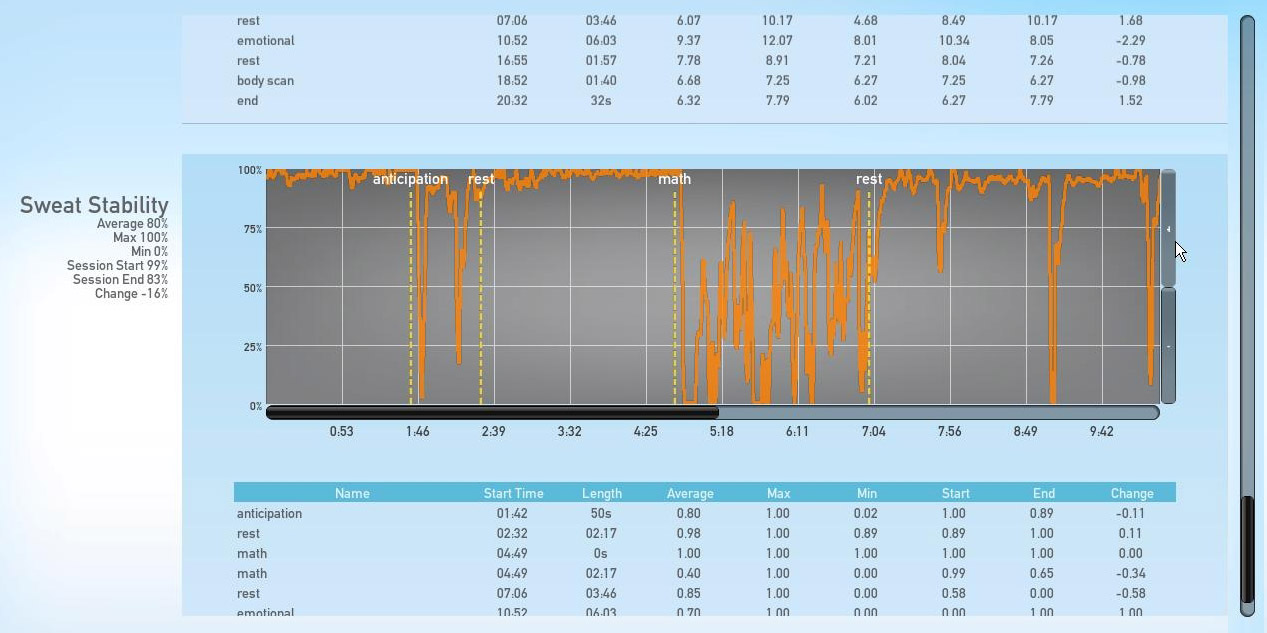Yes, you can feel better...in 2 minutes or less!
Submitted by sv.admAOL Health has shared some great tips for feeling better in just 2 minutes! Some highlights:
Health Issue: If You're Seriously Stressed..."The best fix is the one you can do anywhere: breathing." Says Brooke Siler, owner of New York City's Re:AB Pilates studio. Close your eyes and inhale deeply through your nose. Hold for five counts; exhale through your nose for 10 counts. Repeat for two minutes. This can deactivate your fight-or-flight response and help you relax.
Health Issue: If You've Got Absolutely No Energy...Yoga pro Mandy Ingber, who works with Jennifer Aniston, recommends the bridge pose: "It allows the lungs to fully expand so more oxygen circulates to your brain and muscles." Lie on your back, knees bent, heels directly under knees. Lift hips, clasping hands underneath your back. Hold for 30 seconds, breathing slowly.
Health Issue: If Your Hips Are Stiff From Driving...Hours behind the wheel can lead to hip and leg pain, says Dr. DeMann. Pit stop solution: Stand with your right side facing the car, and place right hand on car at shoulder height. Cross right leg behind left, keeping feet flat, and tilt hips toward car so you're arching sideways. You should feel a stretch in your right hip. Hold for 30 seconds; repeat on opposite side.
Reprint: Ways to create and interact with the Somatic Vision community
Submitted by Abigail Hamilton
Somatic Vision spends a lot of time testing its products with consumers, and incorporating user feedback. We'd love to hear what you have to say, and we encourage you to connect with other users online. Here are two great ways:
- The Somatic Vision Forum. Just click the link at the top of this page under the search bar, or click here, and you're on the discussion board, able to participate in all kinds of discussions surrounding biofeedback, stress reduction, health games, and much more.
- Facebook. Yes, we have a page! Become a fan and begin to connect in a fun way with others who share your interests.
How can suffering be a natural part of well-being?
Submitted by Abigail HamiltonUCLA's Susan Smalley writes eloquently about "Why Well-Being Is Not the Absence of Suffering". A few excerpts:
Well-being is not the absence of illness, disease, or pain and suffering -- that is, life's difficulties. Rather, it is an acceptance of such challenges as part of the human condition, not unique to any one of us. And in the acceptance of this truth, there is a choice to be made: how will you relate to life's challenges?
Whether we know it or not, we choose all the time among a multitude of options. If we bring these choices into consciousness, we discover the vast range of freedom afforded. When you choose to accept suffering instead of wanting to change it, a sense of well-being arises, regardless of external circumstances. The great thing is, we have the freedom to make that choice. In some cases our range of external possibilities is limited (in cases like terminal illness, life itself may not be an option), but we always have a choice in how we relate to pain and suffering.
Once, I met a doctor who came from a war-torn country in Africa and was now living life as a cab driver. He told me he had felt discouraged, regretful, and frustrated by his lot in life until the day he consciously chose to accept his life as a cabbie and began to learn from it, with an open curiosity that changed his level of happiness forever. No longer angry and frustrated, he became curious and talkative to his passengers, who opened their hearts to this caring man and expressed their own dissatisfaction with life. They never wanted to leave his cab because in that car was a man who was content with life.
Stories such as these remind me of the power of choice in our own well-being. We need to see such examples over and over again because we forget our role in shaping our well-being; we act from habitual patterns of mind so often that we forget that we are making decisions at all. The more I explore my mind in my day-to-day life, the more aware I become of the choices I make. With attention, coupled with a curious and accepting attitude, we can fine-tune these choices in life.
And ultimately it is our choices that shape our sense of well-being in the world.
A few ounces of wine enjoyed mindfully: yes.
Submitted by Abigail Hamilton<The Wine Guy at the Chicago Reporter wrote a nice piece on small ways to use the mind-body connection that is at the core of our work at Somatic Vision. The Wine Guy advocates positive thinking and experiences to make life more enjoyable and less stressful.
He recommends a TV-free dinnertime accompanied by a glass of wine, gratitude, and light conversation with loved ones. Sounds good to us!
We are aware that people experiencing ongoing unmanaged stress tend to develop unhealthy habits, which include over-caffeination, over-drinking, over-eating, smoking and the like. These bad habits undermine health as much as the stress that triggers these behaviors.
In contrast, an effective approach to stress management includes an appreciation of well-prepared and nutritious food, a glass of wine to compliment a meal if you'd like, and time simply spent with people you love.
And regarding the wine: Why not add a little mindfulness practice to boost your enjoyment of it?
First, make sure not to overfill the glass. The glass shown in the picture above is too full, preventing the perfume of the wine, its "bouquet," from filling your nose. Much of the pleasure of drinking wine is in the smell, which is the greater part of taste. So, pour just a few ounces into your glass, and swirl it round a little before sipping. You'll enjoy the beauty of the wine's colors especially well if you spread out a white napkin on the table, or have a white tablecloth. Its aroma will escape the glass, and its flavor will develop with the addition of air brought in by the swirling.
Then, take a sip while smelling the more concentrated notes in the glass.
Sip in a way that brings yet more air into the wine (For once, ignore what you know about it being polite to not slurp!) and keep the wine moving around the different areas of your tongue for awhile.
Then enjoy the velvety feel of the wine slipping down your throat and its aroma moving up from your throat into the back of your nose.
How do you feel? We'll guess that you'll feel lovely and relaxed, happy and appreciative of the carefully tended grapes and the caring winemakers who brought passion and expertise to the production of the wine, of the company you're with.
A santé!
Note: These techniques for tasting wine are used by professional wine tasters, and now that you've tried them, you understand why! No more gulping wine just because you're stressed-out, please. You're missing all the beauty and calming effect.
Tai chi: An all-around delight that brings better health and reduces stress
Submitted by Abigail HamiltonI had the pleasure and luck to study tai chi, when I was in my 20s, with the estimable San Francisco tai chi master Simmone Kuo. As someone who's always been pretty much allergic to exercise, this was an incredibly special time for me. In the very early morning, every day, I would bus down to Chinatown and get buzzed into her tall-ceilinged, tall-windowed, austere but homey third-floor studio on Portsmouth square. She'd be eating a bowl of rice or sitting at her desk.
Energy radiated from her. I'd begin my warm-ups and within seconds she was by my side, gently and forcibly correcting the position of my knees or telling me to stay with the exercise longer. She loved to tease, and was unvarnished in her opinions, which she never kept to herself.
The warm-up exercises and the tai chi practice itself always set me off on my day with a skip in my step and a special feeling of friendship.
The New York Times today has a wonderful story about tai chi and its myriad health benefits — including stress reduction, better balance for seniors, and help with depression. Reading it set off a cascade of memories and renewed my awe for the simple, easy, graceful way in which tai chi balances you mentally and physically without the unpleasantness of jarring impacts, sweat, or a gym environment (you can do it anywhere!).
A few highlights from the story:
The graceful, dancelike progression of meditative poses called tai chi originated in ancient China as a martial art, but the exercise is best known in modern times as a route to reduced stress and enhanced health. After reviewing existing scientific evidence for its potential health benefits, I’ve concluded that the proper question to ask yourself may not be why you should practice tai chi, but why not.
It is a low-impact activity suitable for people of all ages and most states of health, even those who “hate” exercise or have long been sedentary. It is a gentle, calming exercise — some call it meditation in motion — that involves deep breathing but no sweat or breathlessness.
It places minimal stress on joints and muscles and thus is far less likely than other forms of exercise to cause muscle soreness or injury. It requires no special equipment or clothing and can be practiced almost anywhere at any time, alone or with others.
Once the proper technique is learned from a qualified instructor, continuing to practice it need not cost another cent.
The many small studies of tai chi have found health benefits ranging from better balance and prevention of falls to reduced blood pressure, relief of pain and improved immunity.
The latest and perhaps best designed study was conducted among patients with debilitating fibromyalgia, a complex and poorly understood pain syndrome.
One thing I want to share from a personal-experience standpoint is the importance and enduring value of the tai chi start-up exercises Simmone taught me. They are so excellent for overall joint and muscle flexibility, and breathing, that you could even forget tai chi itself, and keep this daily 6-step exercise regimen with you for life.
Simmone details these exercises in her book, Long life, good health through tai-chi chuan, which I recommend highly.
The singular importance of stress reduction in Alzheimers treatment
Submitted by Abigail HamiltonPart of our work at Somatic Vision is understanding the links between unmanaged stress and the variety of problems it creates in terms of health and well-being. We also seek to popularize biofeedback, a highly effective way to manage stress and achieve better mental performance outside of the realm of pharamceuticals.
According to reporting by New Scientist, brief periods of stress can cause a rapid rise in the brain proteins linked to Alzheimer's disease, according to a study in mice.
Just three days of stress caused an abrupt 42% increase in brain proteins thought to cause the disease. The study helps to shed light on why people who experience great stress and anxiety appear more prone to this illness, experts say.
Rudolph Tanzi at Harvard Medical School in Boston, Massachusetts says that some doctors have observed a possible link between stressful experiences — such as the loss of a spouse — and an older person's risk of Alzheimer's disease.
A previous study of nearly 800 Catholic nuns, priests and brothers found that those plagued by negative emotions, such as depression and anxiety, had about twice the risk of Alzheimer's as those who took a more laid-back approach to life.
David Holtzman at Washington University in St Louis, Missouri, US, and colleagues focused their attention on the amyloid beta peptide molecule, known to contribute to the formation of the protein tangles and plaques that are the hallmarks of Alzheimer's disease. Previous research has linked higher levels of amyloid beta peptide with increased risk of dementia in humans.
Holtzman says the experiment adds to the growing body of evidence that reducing stress in everyday life might lower a person's risk of Alzheimer's disease. He also speculates that anti-anxiety drugs might one day have a role in the control of this illness.
Interesting: Licorice and cortisol levels Licorice is an herb that may balance cortisol levels. Glycyrrhisic acid, found in licorice, inactivates the enzyme that breaks down cortisol. By taking licorice, you slow the breakdown of cortisol, which keeps cortisol levels at a steady level. Consult a naturopath for more information on dosage and to see if this herb is the correct one for your situation. Licorice in large doses can raise blood pressure and cause water retention. Though it can be an effective solution, using licorice for adrenal issues should be done with a naturopath’s guidance. |
He presented the findings at the Society for Neuroscience meeting in Atlanta, Georgia, US, in October, 2006. These findings are consistent with new research presented this February, "Cortisol, 'the Stress Hormone' is the Cause of Alzheimer’s and Where do We Go From Here?" by Alfred T. Sapse MD(r) President of the firm Endogenous StemCell Activators, Inc (ESAI). Though ESAI focuses on the development of drug Kronos IV to treat stress in Alzheimers patients and those at risk, the findings reinforce the message that stress reduction is key to radically improving Alzheimer's outcomes.
Feb 07, 2010 – The purpose of this presentation is to provide evidence that Cortisol initiates and participates in the main changes in the brain of an Alzheimer's patient.
CORTISOL IS THE CAUSE OF ALZHEIMER’S
Cortisol is a hormone manufactured by the adrenal glands, located on the top of the kidneys. Cortisol helps the individual cope with every day stress by temporarily increasing its synthesis, also increasing glucose and other defense factors and releases them in the circulatory system. When the stress has been dealt with, it returns back to normal levels. However when the stress lasts for weeks, months or longer Cortisol that went up initially, does not go down and becomes a most destructive agent to cells, tissues and organs and next “stress diseases” would set in.
Young minds, sharp focus
Submitted by Abigail HamiltonThe Houston Chronicle reports that a biofeedback pilot program in area schools have become enormously popular.
Parents have heard other parents' stories about how the program helped struggling third-graders improve their focus. Behavior problems declined in schools with this program, and students made double-digit gains on the Texas Assessment of Knowledge and Skills after participating in the nonprofit Neurotherapy Center of Houston's program. According to the Chronicle:
"It has changed the path of their lives," [Helms Elementary Principal Theresa] Campos said.
"If they can't focus — no matter how good of a teacher you are, no matter how good the program is out of the box — it can't help," said neurotherapist Steven Cochran.
Many Helms students started the program only capable of focusing for a few minutes.
Often combating attention and anxiety problems, they worked to sustain focus for at least 20 minutes. In the ideal state, the brain's theta waves drop and sensory motor rhythms increase.
Biofeedback is used to treat attention, anxiety and sleep problems, as well as some physical and emotional conditions. The self regulation produces the same type of results as prescription medicines used to treat ADHD, Cochran said.
Houston mother Virginia Ramirez raves about the progress her 11-year-old daughter Hallie made because of the biofeedback program.
Ramirez said she would have never realized her daughter had an attention disorder without a glimpse at her brain waves.
Hallie, then a second-grader, wasn't reading and was convinced that she was stupid when she started the training. Now, she's a strong student at Hamilton Middle School.
"I give a lot of credit to the school district and the school for being open to looking at something that's really an alternative," she said. "It was a godsend for us. No matter how much money we threw at this, I don't think we would have figured it out."
Mindfulness helps many people live better
Submitted by Abigail HamiltonMindfulness is an off-screen practice that is incredibly central to the Alive & Beyond 8-week program. Within Alive, in Workshops, you'll find Mindfulness instruction.
In fact, mindfulness has been shown to have very positive effects in many arenas of health. Here's a round-up of recent news items reflecting some of the many ways mindfulness improves people's lives and outcomes, often taking the place of medications that can bring unwanted side-effects.
From Bloomberg Businessweek, a story about mindfulness easing depression and anxiety in people suffering from MS:
The problem with medications is that patients are told, "'Here are some drugs that make you sad, tired and depressed, but nothing will effectively take away your disease.' They're left with no effective treatments."
Enter mindfulness meditation. "You learn to objectify what you're feeling, be it pain or anxiety or depression, and see it as a separate entity that's not part of yourself. It helps you let it go. You're getting to the heart of the symptom rather than just covering it as you do with medications."
From the Times of India:
'Mindfulness' meditation, the process of becoming more aware of one's surroundings, improves mental health and well being in teenage boys, says a new study.
Researchers from the University of Cambridge found that after meditation, 14- and 15-year-old boys were found to have increased well-being, defined as the combination of feeling good (including positive emotions such as happiness, contentment, interest and affection) and functioning well.
"Our study demonstrates that this type of training improves well-being in adolescents and that the more they practice, the greater the benefits. Importantly, many of the students genuinely enjoyed the exercises and said they intended to continue them," said Professor Felicia Huppert.
"Another significant aspect of this study is that adolescents who suffered from higher levels of anxiety were the ones who benefitted most from the training," she added.
From Worlds Breaking News:
There is growing evidence that mindfulness meditation when used consistently over a period of time will help to weaken the powerful mental habits in individuals trying to stop smoking cigarettes. Mindfulness meditation helps to control compulsive forms of behavior that can make individuals trying to quit smoking cigarettes resistant to change.
Now there is sound neuroscience proof that the consistent practice of mindfulness can in fact modify the structure of the brain in measurable and seemingly positive ways, giving rise to increased equanimity and positive affect.
Several preliminary research studies have employed mindfulness meditation in assisting individuals to stop smoking cigarettes. In one of these studies, 56% of the subjects showed biologically-confirmed smoking abstinence six weeks after quitting. It was also found that “compliance with meditation was positively associated with smoking abstinence and decreases in stress and affective distress.”
A creative way to combat stress in the workplace
Submitted by Abigail HamiltonA Saint Louis area manufacturer has a program in place that helps combat workplace stress in an ever-more challenging industry — and helps socialize dogs so they can be adopted.
"We began as a custom-cutting tool manufacturer for the screw machine industry, but when the tooling market began to constrict, a lot of screw machine work went to the Asian Rim," Reichlin said. "Following the economic upheaval in late 2008 and 2009, the stress level of running a manufacturing company these days can be quite high.
"It's amazing how bringing a dog into the workplace ends up being semi-therapeutic. It really helps people communicate better with each other. It changes the stress level in the room."
Step-by-step mind-body demo — Integrating mindfulness with biofeedback series, continued
Submitted by sv.admBy Yuval Oded
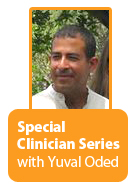 This walkthrough shows a clinician how to demonstrate the effect of mental stress on the body in real-time using Alive Clinical Version biofeedback graphing. We can tell clients what we know, but showing them is much more powerful and motivating.
This walkthrough shows a clinician how to demonstrate the effect of mental stress on the body in real-time using Alive Clinical Version biofeedback graphing. We can tell clients what we know, but showing them is much more powerful and motivating.
- From the baseline level we let the SCL line stabilize, preferably letting it get a downward trend as in the example shown below example.
After going down from 2.71 microsiemens to 2.16 microsiemens, this is the perfect point at which to evoke an anticipation reaction. At timeline 1 min. 50 sec., the client was told “I will now ask you a difficult math question.”
Notice the sharp rise in the SCL line climbing to 3.50 microsiemens.
The client did not move or say anything (since the proposed question was not yet asked), so it is clear that the rise in arousal level stems from the psychological impact of anticipation. - By pressing the Hide button we can show the client only the SCL line. After the first anticipation trigger, she is asked to rest.
- After approx 2 min. rest time the client is asked a question in math. Notice the very sharp rise in arousal level (to 8.5 microsiemens) showing the psychological impact on the client. Later, she commented that the thought “What if I am wrong?” passed through her mind, causing this rise in arousal level.
- Showing the sweat stability graph to the client at this stage can be useful, as it indicates the sharp difference in stability when resting compared to being emotionally agitated by the math task.
- Show the rest period, line going down. Take some time with the client to discuss this demo of how thoughts affect the body.
- Using the clinical-view option can deepen the client’s understanding of his body’s reaction: the sharp rise in average heart rate when asked the math question, the dramatic sweat stability changes at rest compared to when challenged.

